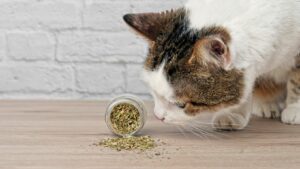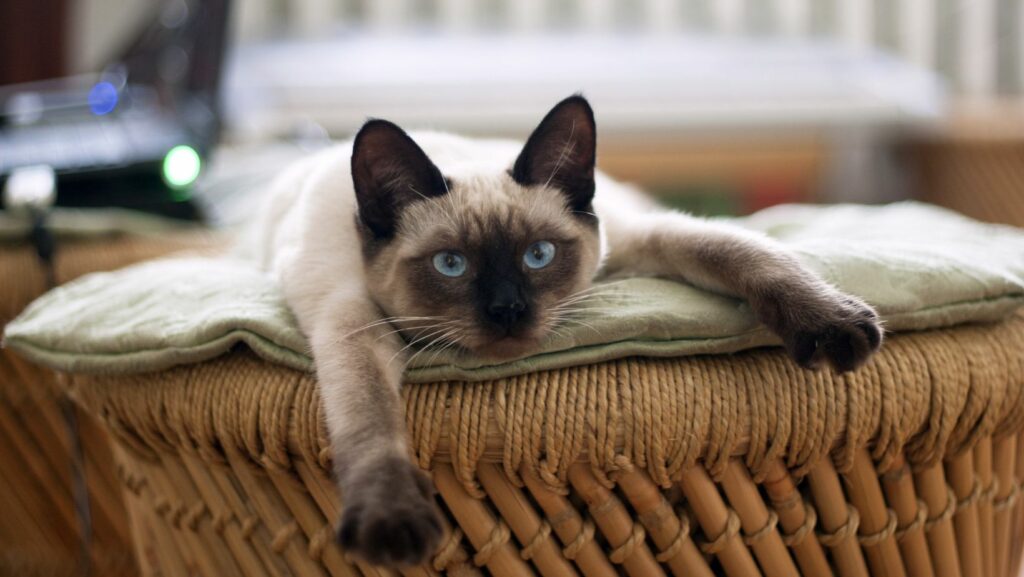When a cat enters heat, it can be a challenging time for both the feline and its owner. The loud vocalizations, restlessness, and constant desire to escape can disrupt the household. While traditional methods like spaying are effective, some cat owners seek natural alternatives to help manage these symptoms.
Herbal remedies offer a gentle approach to soothing a cat in heat without resorting to invasive procedures. These natural solutions can help calm the feline, reducing stress for both the pet and its human companions. Herbs like chamomile and valerian root are renowned for their calming properties and have been used for centuries in holistic pet care.
Exploring herbal options not only provides a natural way to address behavioral changes but also strengthens the bond between owner and pet. With the right guidance, these remedies can offer relief and restore peace to the home during this challenging phase.
Understanding Cats in Heat
Cats experience a distinctive cycle known as being “in heat.” This phase is characterized by various behavioral and physiological changes.
Common Behaviors and Symptoms
 During this time, cats often exhibit increased vocalization and a relentless demand for attention. They may also become unusually affectionate, raise their hindquarters, and tread with their back feet. In some cases, spraying or urination may occur to mark territory. These behaviors signal a readiness to mate and can lead to stress for both the cat and its owner.
During this time, cats often exhibit increased vocalization and a relentless demand for attention. They may also become unusually affectionate, raise their hindquarters, and tread with their back feet. In some cases, spraying or urination may occur to mark territory. These behaviors signal a readiness to mate and can lead to stress for both the cat and its owner.
Reasons to Consider Herbal Remedies
Herbal remedies offer a natural approach to managing symptoms in cats during heat. They reduce stress and discomfort through calming ingredients like chamomile and valerian root. Herbs provide a non-invasive option for pet owners seeking alternatives to conventional methods. By choosing herbal treatments, owners can support their cat’s well-being and manage heat-related challenges without introducing synthetic substances.
Herbal Remedies for Cats in Heat
Herbal remedies provide a natural way to alleviate symptoms experienced by cats during heat cycles. Various herbs offer calming properties that can help soothe behavioral changes and promote a serene environment.
Catnip
 Catnip, a popular herb in feline care, contains nepetalactone which impacts mood. Although it may initially excite cats, subsequent calmness follows. Owners can introduce catnip through toys or sprays to redirect attention and ease restlessness.
Catnip, a popular herb in feline care, contains nepetalactone which impacts mood. Although it may initially excite cats, subsequent calmness follows. Owners can introduce catnip through toys or sprays to redirect attention and ease restlessness.
Chamomile
Chamomile offers soothing effects that benefit stressed cats. Its anti-inflammatory and sedative properties make it ideal for reducing anxiety during heat. Herbal teas infused with chamomile can be used as a gentle additive to a cat’s regular drinking water.
Valerian Root
Valerian root, known for its calming abilities, helps manage hyperactive behaviors in cats. It works by influencing the neurotransmitter GABA, promoting relaxation. Owners can offer valerian root in the form of cat toys or small doses of dried root to mitigate stress in their pets.
Benefits of Using Herbal Remedies
Herbal remedies offer significant advantages for managing cats in heat, providing both natural and effective solutions.
Natural and Safe Alternatives
 Herbal remedies present a safe and gentle option compared to synthetic treatments. Ingredients like chamomile and valerian root, known for their calming effects, originate from plants and are less likely to cause adverse reactions. When owners use these natural ingredients, they reduce the risk of side effects, offering a holistic approach to managing stress and behavioral changes in cats.
Herbal remedies present a safe and gentle option compared to synthetic treatments. Ingredients like chamomile and valerian root, known for their calming effects, originate from plants and are less likely to cause adverse reactions. When owners use these natural ingredients, they reduce the risk of side effects, offering a holistic approach to managing stress and behavioral changes in cats.
Cost-Effective Solutions
Herbal treatments often prove more economical than veterinary prescriptions. Popular herbs such as catnip or chamomile are available in many forms, including teas or sprays, at a lower cost than medications. By choosing these remedies, pet owners can efficiently manage heat-related symptoms while staying within budget.
How to Administer Herbal Remedies
Administering herbal remedies to cats in heat can be straightforward and effective when done correctly. Owners should introduce these remedies gradually, observing their cat’s reactions to ensure they respond well. Herbal products like catnip toys or chamomile sprays can be strategically placed in areas where the cat spends most of its time. For valerian root, teas can be prepared and added to the cat’s drinking water or used to lightly mist their bedding. It’s crucial to follow recommended dosages and consult with a veterinarian if there are any concerns about interactions with existing health conditions.

